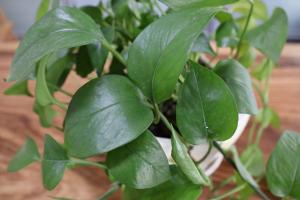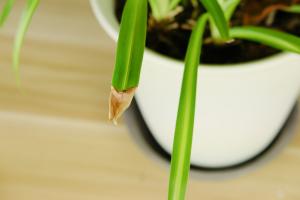What is eating the top leaves of my tomato plants?
Tomato plants are a popular addition to many gardens due to their bright colors, juicy fruits, and their versatility in cooking. Unfortunately, it's not uncommon for tomato plants to fall victim to pests and diseases that can damage their leaves and ultimately impact their overall health and production. One common problem that gardeners face is finding their tomato plant's top leaves being eaten or damaged. This can leave gardeners wondering what's going on and how to remedy the issue.
Possible Causes of Tomato Plant's Top Leaves Being Eaten
While there are several potential reasons why the top leaves of tomato plants may be getting eaten or damaged, there are some common culprits that gardeners should be aware of.
One possible cause is caterpillars. These insects are known to munch on tomato leaves, particularly during the spring and summer months when they are actively feeding. Another potential cause could be slugs or snails, which love to feast on tender plant leaves, especially during wet weather. Other culprits could include beetles, grasshoppers, and aphids. These pests can cause significant damage to tomato plants, so identifying the pest is important to determine how to best treat the problem.
How to Identify the Pest Eating Your Tomato Plant's Top Leaves
If you suspect that pests are eating your tomato plant's top leaves, it's important to identify the culprit so you can take appropriate action. One of the easiest ways to do this is to observe the plant and try to spot the pest. Check for signs of eggs or larvae, as well as any trails or droppings that may indicate the presence of slugs or snails. You can also examine the plant more closely using a magnifying glass to check for small insects, such as aphids or mites.
Another helpful technique is to place a white sheet of paper underneath the plant and then shake the plant. This will cause any pests to fall onto the paper, making them easier to identify. Once you have identified the pest, you can then take steps to treat the problem.
How to Treat Pest Problems in Your Tomato Plants
Once you have identified the pest, it's important to take action to prevent further damage to your tomato plants. One option is to use insecticides or pesticides to kill the pests. However, many gardeners prefer to use natural methods to avoid chemicals that may be harmful to the environment or to people and pets.
Some natural pest control methods for tomato plants include introducing natural predators, such as ladybugs or lacewings, to the garden. These insects feed on pests like aphids, so they can help keep the population under control. Another option is to create a physical barrier around the plants, such as a wire mesh, to prevent pests from reaching them. Additionally, you can try spraying the plants with a solution of water and dish soap, which can help deter some pests.
Conclusion
Eating the top leaves of tomato plants is a common problem that gardeners may experience. The culprits may include pests like caterpillars, slugs, snails, beetles, grasshoppers, and aphids. Identifying the pest and taking appropriate action is important to prevent further damage to your tomato plants. Natural pest control methods are a good option to avoid using harsh chemicals that may be harmful to the environment or people and pets. With the right approach, you can protect your tomato plants and enjoy a healthy, bountiful harvest.

 how many times do yo...
how many times do yo... how many planted tre...
how many planted tre... how many pine trees ...
how many pine trees ... how many pecan trees...
how many pecan trees... how many plants comp...
how many plants comp... how many plants can ...
how many plants can ... how many plants and ...
how many plants and ... how many pepper plan...
how many pepper plan...
































